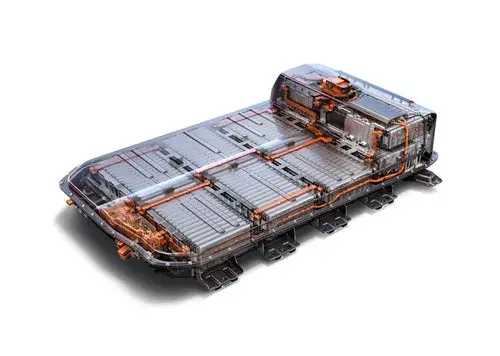The Latest Developments in EV Batteries: Silicon, Sodium, and Solid-State
The electric vehicle (EV) revolution is progressing at an unprecedented pace, and three groundbreaking technologies—Silicon batteries, sodium batteries, and solid-state batteries—are emerging as potential game-changers in the world of EVs. Let’s explore the exciting developments surrounding these innovations and how they could reshape the future of automotive electrification.

The Silicon Anode Battery: The Future of Electric Mobility
Silicon anode batteries are a type of lithium-ion battery that replaces the traditional graphite anode with a silicon-based one, offering several advantages over graphite, primarily its significantly higher energy storage capacity.
Silicon Anode vs. Lithium Anode EV Batteries
As the world moves toward a more sustainable future, the latest EV battery developments are playing a pivotal role in reducing greenhouse gas emissions and reliance on fossil fuels.
Understanding Silicon Anode Batteries: The Basics
Silicon anode batteries use silicon, which can store up to ten times more lithium ions than graphite, making them an attractive option for improving energy density in EVs.
Comparing Silicon Anode to Lithium Anode EV Batteries
Now, let’s delve into a detailed comparison of these two battery technologies:
- Energy Density: Silicon anode batteries have the potential to offer significantly higher energy density compared to lithium anode batteries, potentially increasing the range of EVs.
- Charging Speed: Silicon anode batteries tend to charge in about one-sixth of the time it takes to charge lithium anode batteries, allowing for rapid charging and efficient energy storage.
- Cycle Life: Silicon anode batteries have historically faced issues with cycle life due to silicon’s tendency to expand and contract during charge and discharge, but ongoing research aims to mitigate these problems.
- Cost: Lithium anode batteries are more cost-effective due to their mature manufacturing process, while silicon anode batteries may face challenges in terms of cost.
- Safety: Silicon anode batteries may face challenges related to silicon’s expansion and contraction during cycling, which can lead to electrode damage.
- Environmental Impact: Silicon anode batteries may have a lower environmental impact in the long term, given their potential for higher energy density, which can lead to fewer batteries being required over a vehicle’s lifetime.
Sodium Battery Development: A Sustainable Alternative
Sodium batteries, often overshadowed by their lithium-ion counterparts, are making a comeback as researchers and engineers seek more sustainable and abundant materials for electric vehicle battery development.
One of the key advantages of sodium batteries is their energy density. Recent advancements in sodium-ion technology have significantly improved energy storage capacity, bringing them closer to the performance levels of traditional lithium-ion batteries. These developments are crucial in reducing range anxiety and making EVs more practical for everyday use.
Solid-State Batteries vs. Lithium-Ion Batteries in Electric Vehicles
Solid-state batteries represent another major breakthrough on the EV scene, offering higher energy density, faster charging, and longer lifespan.
- Electrolyte Material: Solid-state batteries use a solid electrolyte, made from a variety of materials, eliminating the need for a flammable liquid component present in lithium-ion batteries.
- Anode and Cathode Materials: Solid-state batteries employ similar anode and cathode materials to lithium-ion batteries, making them compatible with existing battery manufacturing processes.
Let’s explore the technical aspects and compare solid-state batteries to lithium-ion batteries used in electric vehicles:
- Energy Density: Currently, lithium-ion batteries have a slight edge in energy density, but solid-state batteries are steadily improving and are expected to reach levels comparable to or even exceeding those of lithium-ion batteries in the near future.
- Charging and Discharging Rates: Solid-state batteries can handle rapid charge and discharge rates, offering similar performance capabilities as lithium-ion batteries.
- Safety and Thermal Stability: Solid-state batteries are considered safer due to their non-flammable electrolyte, reducing the risk of thermal runaway and enhancing overall safety.
- Longevity: Solid-state batteries are expected to have longer cycle lives, potentially outlasting lithium-ion batteries, which is a significant advantage for long-term cost-effectiveness.
Challenges and the Road Ahead
While silicon, sodium batteries, and solid-state batteries offer tremendous promise, there are still hurdles to overcome, such as cost, durability, and manufacturing scalability. Ensuring the safety and reliability of these technologies under various conditions remains a top priority.
Solid-state batteries are poised to be the future of electric vehicle energy storage, offering numerous advantages, including safety, longevity, and potential for energy density improvements. As these technologies continue to evolve, we can anticipate a future where electric vehicles are not only more efficient and reliable but also safer and more sustainable than ever before.
Additionally, integrating these batteries into existing EV platforms and charging infrastructure presents logistical challenges. However, as advancements continue, these obstacles are expected to be overcome, paving the way for widespread adoption.
The developments around silicon, sodium batteries, and solid-state batteries for electric vehicles are exciting steps forward in the EV industry’s quest for sustainability, performance, and safety. As these technologies mature and become more accessible, we can look forward to a future where EVs are not only more eco-friendly but also more practical and efficient than ever before.

